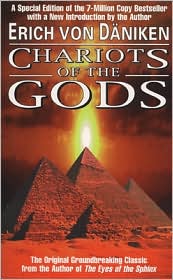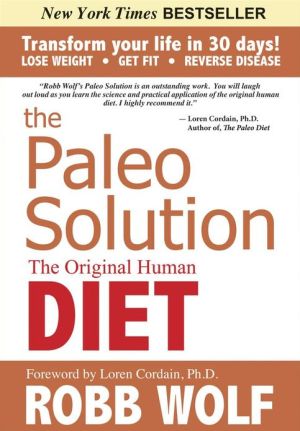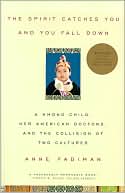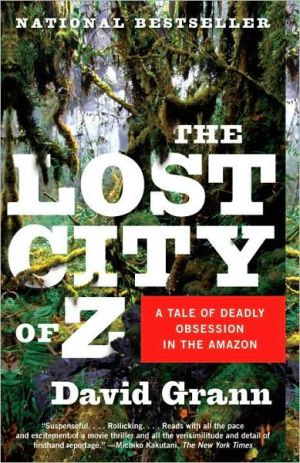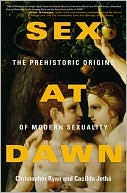Male and Female
Mead's anthropological examination of seven Pacific island tribes analyzes the dynamics of primitive cultures to explore the evolving meaning of "male" and "female" in modern American society. On its publication in 1949, the New York Times declared, "Dr. Mead's book has come to grips with the cold war between the sexes and has shown the basis of a lasting sexual peace." This edition, prepared for the centennial of Mead's birth, features introductions by Helen Fisher and Mead's daughter, Mary...
Search in google:
Reprint of Mead's study of American society. Cited in Books for College Libraries, 3d ed. Annotation c. Book News, Inc., Portland, OR (booknews.com)
Chapter One\ \ \ The Significance of the Questions We Ask\ \ \ How are men and women to think about their maleness and their femaleness in this twentieth century, in which so many of our old ideas must be made new? Have we over-domesticated men, denied their natural adventurousness, tied them down to machines that are after all only glorified spindles and looms, mortars and pestles and digging sticks, all of which were once women's work? Have we cut women off from their natural closeness to their children, taught them to look for a job instead of the touch of a child's hand, for status in a competitive world rather than a unique place by a glowing hearth? In educating women like men, have we done something disastrous to both men and women alike, or have we only taken one further step in the recurrent task of building more and better on our original human nature?\ These are questions which are being asked in a hundred different ways in contemporary America. Polls and tracts and magazine articles speculate and fulminate and worry about the relationship between the sexes. In the moving pictures beautiful girls in tortoise-shell spectacles and flat-heeled shoes are first humiliated for competing with men, then they are forgiven, loved, and allowed to be glamorous only when they admit their error. In the advertisements on the billboards, men are now told how they, if they wear the right hat, may be the chosen one, the loved one — a roIe that used to be reserved for women. The old certainties of the past are gone, and everywhere there are signs of an attempt to build a newtradition, which like the old traditions that have been cast aside will again safely enfold growing boys and girls, so that they may grow up to choose each other, marry, and have children. The fashions bear the imprint of this uncertainty; the "new look" of 1947 partly captured the fleeting image of the mothers of a generation ago, the boys could again find the girls marriageable — as their mothers were — while those same girls gained a new femininity by suiting their swinging gait to the remembered feeling of ruffled skirts like those their mothers once wore. In every pair of lovers the two are likely to find themselves wondering what the next steps are in a ballet between the sexes that no longer follows traditional lines, a ballet in which each couple must make up their steps as they go along. When he is insistent, should she yield, and how much? When she is demanding, should he resist, and how firmly? Who takes the next step forward or the next step back? What is it to be a man? What is it to be a woman?\ No single book can hope to do more than touch a question that is so basic to human life. I have tried, in this book, to do three things. I try first to bring a greater awareness of the way in which the differences and the similarities in the bodies of human beings are the basis on which all our learnings about our sex, and our relationship to the other sex, are built. Talking about our bodies is a complex and difficult matter. We are so used to covering them up, to referring to them obliquely with slang terms or in a borrowed language to hiding even infants' sex membership under blue and pink ribbons. It is difficult to become aware of those things about us which have been, and will always be, patterned by our own particular modesties and reticences. We reject, and very rightly, catalogues of caresses arranged in frequency tables, or accounts of childhood that read like a hospital chart. So to make it possible to think vividly, and yet at a comfortable distance, of the way in which our bodies have learned, throughout their lives, how to be male, how to be female, I draw — in the first part of this book — upon the seven South Sea cultures I have studied during the last quarter of a century. Their basic learnings are the same as our basic learnings; each human baby at its mother's breast must learn that it is either of the same sex, or of the opposite sex, from the mother who has borne it, from the father who fathered it. The boy may grow up to carry spears and bows and arrows instead of brief-cases and fountain-pens, but also he must woo and win and keep a woman. The women may wear the scantiest clothing, and spend their days in the simplest tasks, but in their acceptance of their husbands, and in their child-bearing on some green mountain-side, sometimes not even sheltered from the rain, they face their essential womanhood as surely as the woman who bears her baby in a modern hospital. In following the steps by which their children learn about their sex membership, we can get some sense of the process of learning to be male, learning to be female, some recognition of how we ourselves arrived at our own sense of our own sex; so I have called this section, Part Two, "The Ways of the Body."\ In the next section, "The Problems of Society," I draw not merely on the seven South Sea cultures I have studied myself, but on some of the knowledge we have of all human societies, as each has attempted to develop a myth of work, to bind men to women and children, to get the children fed and reared, and to settle the problems that arise whenever individual sex impulses must be disciplined into social forms. We can design forms of the family that fit our modern life better if we know what designs have been used in the past, what are the common elements that no society has yet found ways of ignoring, how rules about incest have made it possible to develop family life as we know it...
Introduction for the Apollo Edition, 1967Introduction for the Pelican Edition, 1962AcknowledgmentsIThe Significance of the Questions We Ask3IIHow an Anthropologist Writes22IIIFirst Learnings51IVEven-handed, Money-minded, and Womb-envying Patterns78VFathers, Mothers, and Budding Impulses105VISex and Temperament128VIIBasic Regularities in Human Sex Development143VIIIRhythm of Work and Play163IXHuman Fatherhood Is a Social Invention183XPotency and Receptivity201XIHuman Reproductivity223XIIOur Complex American Culture245XIIIExpected Childhood Experience265XIVPre-courtship Behaviour and Adult Sex Demands281XVSex and Achievement296XVIEach Family in a Home of Its Own325XVIICan Marriage Be for Life?342XVIIITo Both Their Own367Notes to Chapters387Appendix I. Background and Bibliographical Material on the Seven Pacific Island Cultures: Samoa; Manus; Arapesh; Mundugumor; Iatmul; Tchambuli; Bali403Appendix II. The Ethics of Insight-giving431Appendix III. Sources and Experience in Our American Culture451Index of Personal Names465Index of Subjects467

